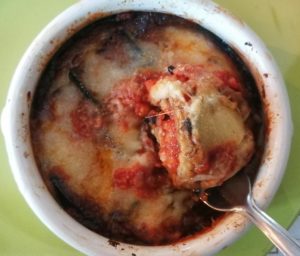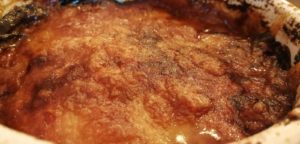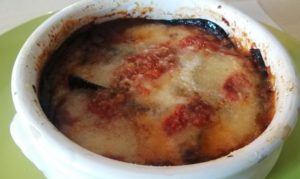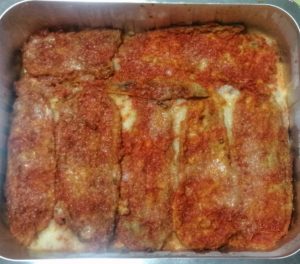 Among the most loved and iconic dishes of Mediterranean cuisine and, more specifically, of Italian cuisine, is the eggplants parmigiana or simply “parmigiana”. This recipe originated in Sicily and is characterised by a fragrant and heady aroma, and has, in fact, conquered first the rest of the country and, subsequently, the whole world. It is not surprising, in fact, to taste excellent eggplants alla parmigiana even outside our national borders, as over the years this recipe has become an excellence representing Italy.
Among the most loved and iconic dishes of Mediterranean cuisine and, more specifically, of Italian cuisine, is the eggplants parmigiana or simply “parmigiana”. This recipe originated in Sicily and is characterised by a fragrant and heady aroma, and has, in fact, conquered first the rest of the country and, subsequently, the whole world. It is not surprising, in fact, to taste excellent eggplants alla parmigiana even outside our national borders, as over the years this recipe has become an excellence representing Italy.
What makes this dish so popular is also the ease with which it is prepared. According to chefs and culinary experts, the secret lies in the choice of raw materials and the great care that must be taken in each step. Next, all the information needed to make an aubergine parmigiana in a workmanlike manner, in full respect of the ancient Sicilian culinary tradition, will be provided.
 Frying eggplants
Frying eggplants
How could we not start with the main ingredient of this recipe: eggplants. A vegetable capable of guaranteeing numerous beneficial effects to the organism, eggplants find their tastiest use in the parmigiana, a recipe that, unlike many others, involves frying them. This procedure makes these vegetables crispier but, if not done correctly, causes the dispersion of liquids. Consequently, if this is to be avoided, it is best to dip them in a batter of beaten eggs and flour.
As far as oil for frying is concerned, on the other hand, the choice can be manifold. In this case, in fact, it is also possible to choose between sunflower oil and peanut oil, whose not excessively strong flavours will allow the aubergines to remain unchanged.
 Choose a quality mozzarella
Choose a quality mozzarella
The next step after carefully frying, drying and placing the eggplants in the baking tin is the use of cheese. The original recipe calls for the use of mozzarella, which can be fiordilatte or, even better, buffalo. However, if these ingredients are not available, other types of cheese can be used, such as provola, scamorza or caciocavallo.
If mozzarella is available, it is essential to completely remove the excess whey, as otherwise the end result would be a watery parmigiana with an excessively soft consistency.
The process of drying the mozzarella, which is even more necessary if it comes from buffalo milk, can be carried out by simply cutting the product into thin strips and, after placing it on an inclined plane, applying light pressure with a fork. Or as some older people do (my mother included), freeze the mozzarella before assembling the pan.
 Tomato and basil as per tradition
Tomato and basil as per tradition
To make it even creamier and tastier, of course, is the sauce. Here again, the advice is to stick as closely as possible to tradition, choosing peeled tomatoes to be broken up directly in the pan and able, through the juicy pulp, to give the dish additional texture. Just as our grandmothers taught us, a good sauce should cook on a gentle heat with a lid for about 30 minutes, the time it takes to boil and slightly reduce. It is precisely the presence of bubbles that will be the signal that the tomato is perfectly cooked. After adding a pinch of salt to make it even more fragrant, a few leaves of fresh basil are inevitable when the cooking is finished.
 Composition of the dish
Composition of the dish
The last process is the composition of the dish. As mentioned earlier, the first step is to lay the eggplants, dried in advance, on the bottom of the baking dish. Although this may seem an easy operation, care must be taken not to create gaps by slightly overlapping the ends of the aubergines. Once this is done, it is the turn of the mozzarella and the sauce, which must be distributed in such a way as to cover the entire surface of the bottom.
These same steps should be repeated until all the ingredients are used up, allowing the composition of a multi-layered parmigiana. The final touch is a generous sprinkling of Parmesan cheese and a drizzle of raw oil. Only at the end of this meticulous procedure will it be possible to bake the pan at 180 degrees for about 35-40 minutes, the time needed to form the right crust on the surface.
